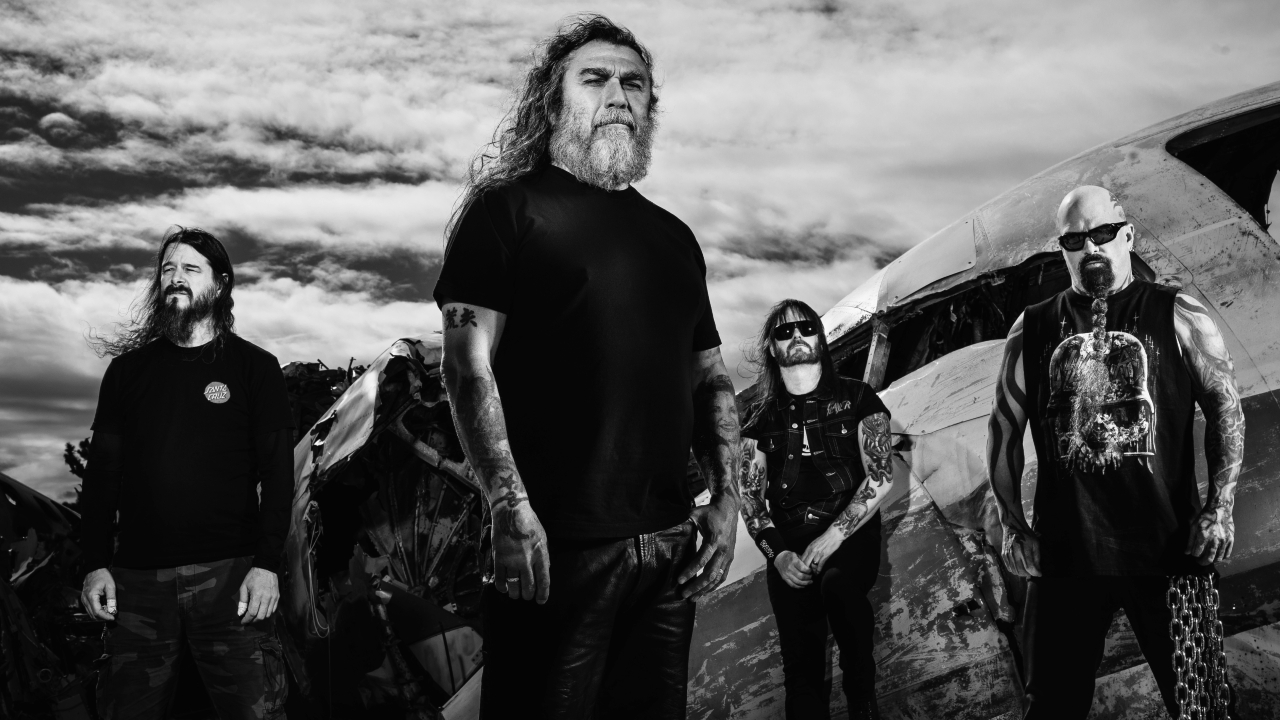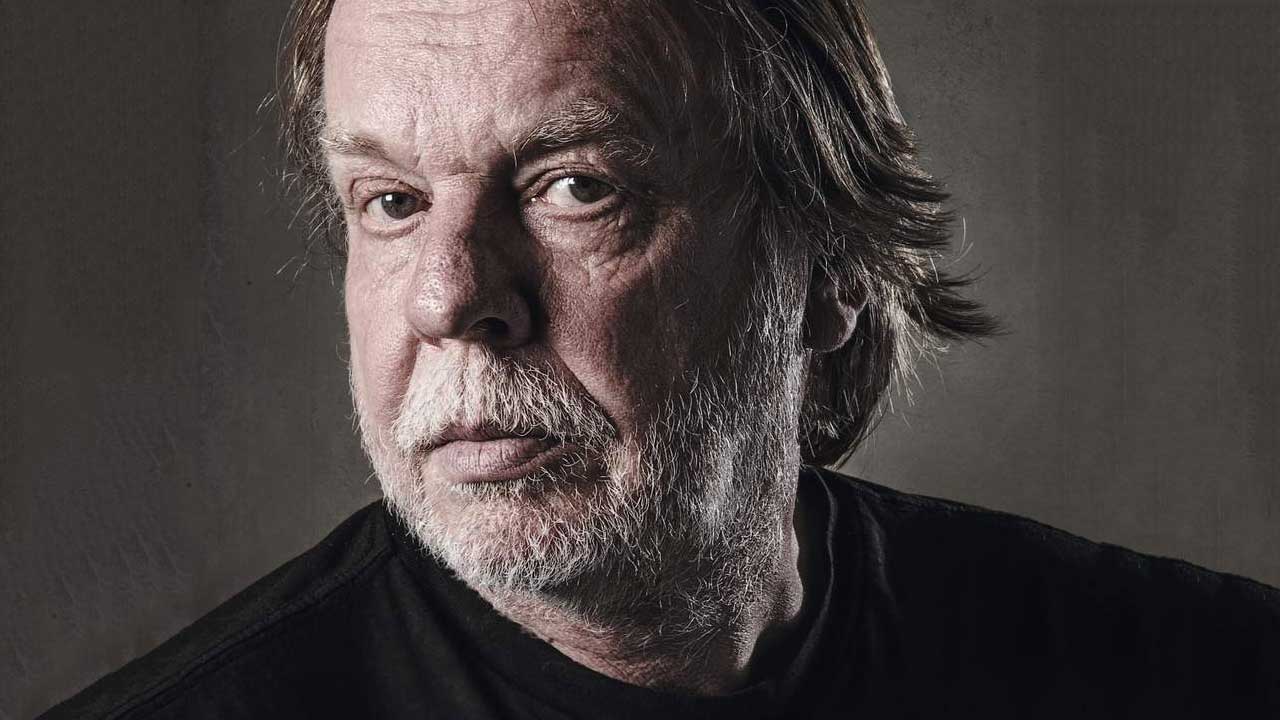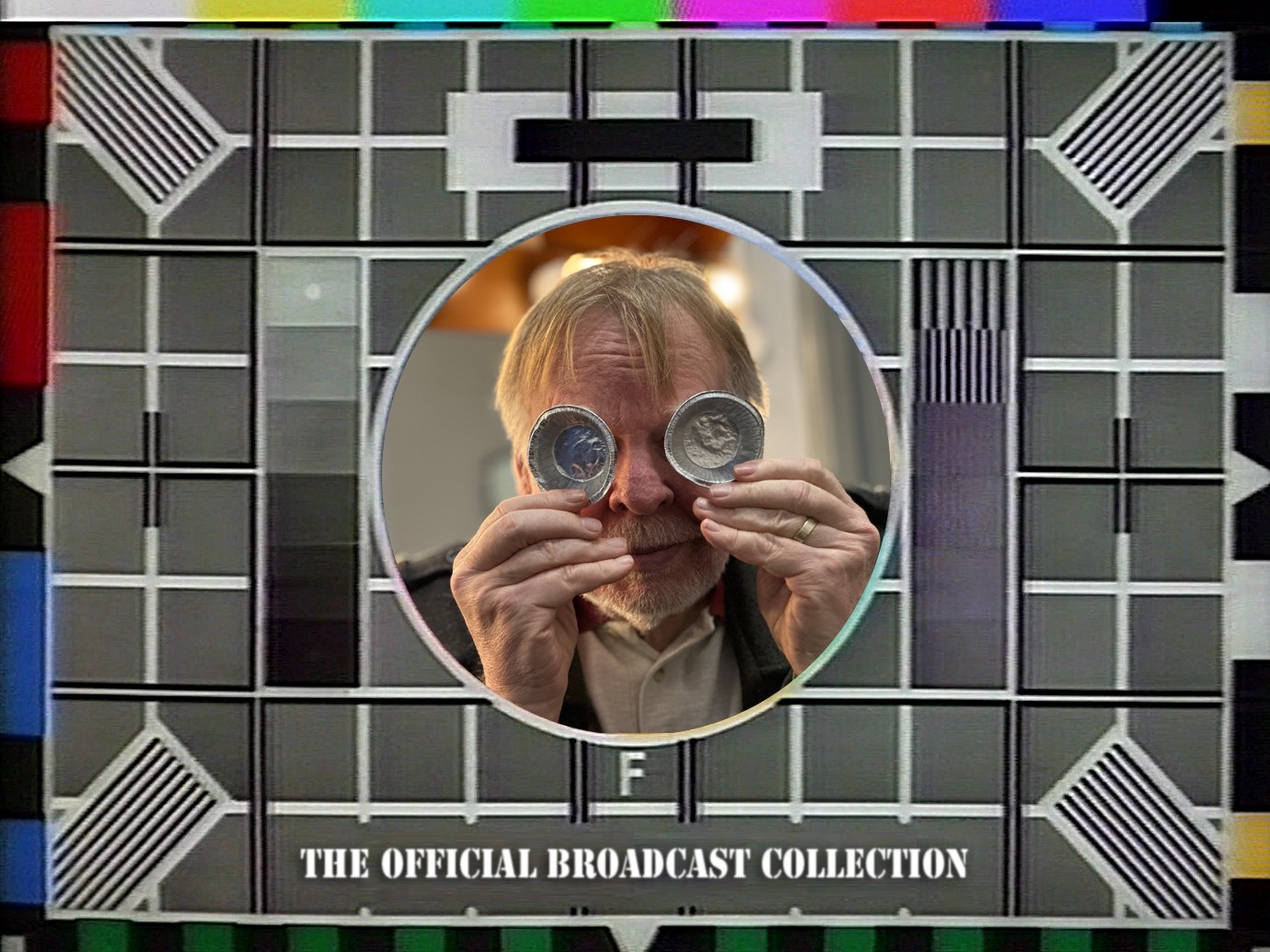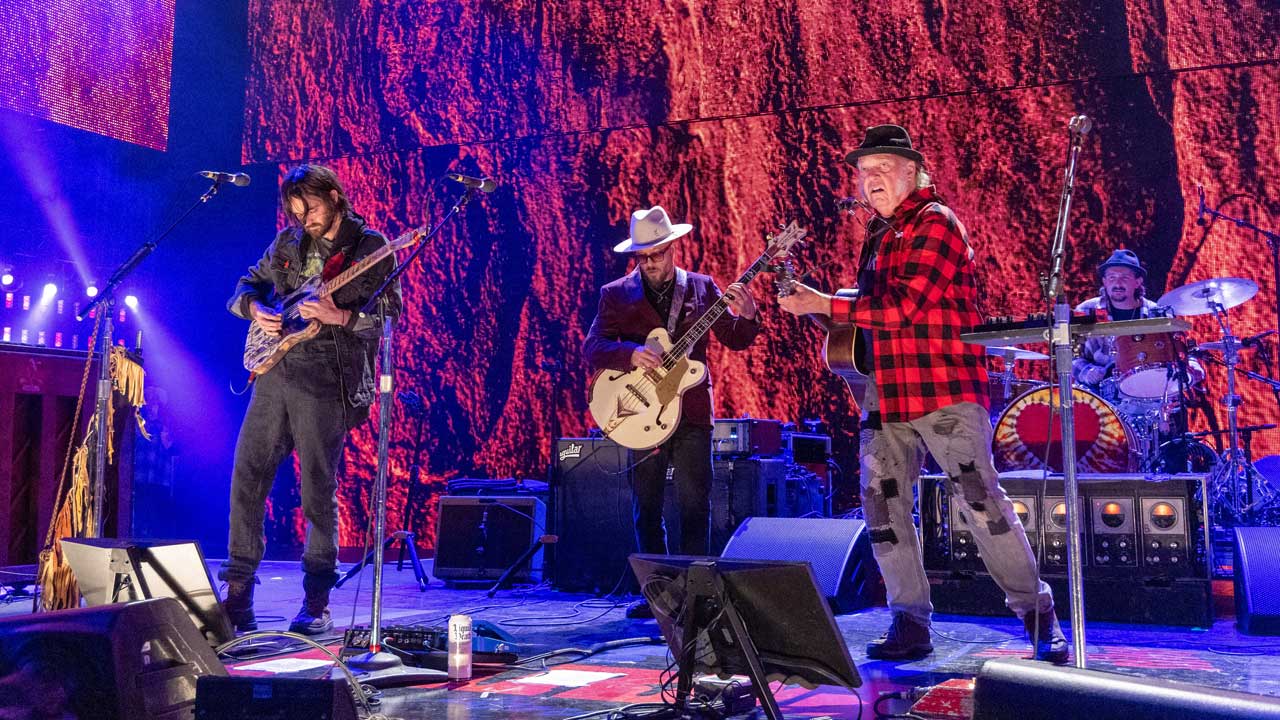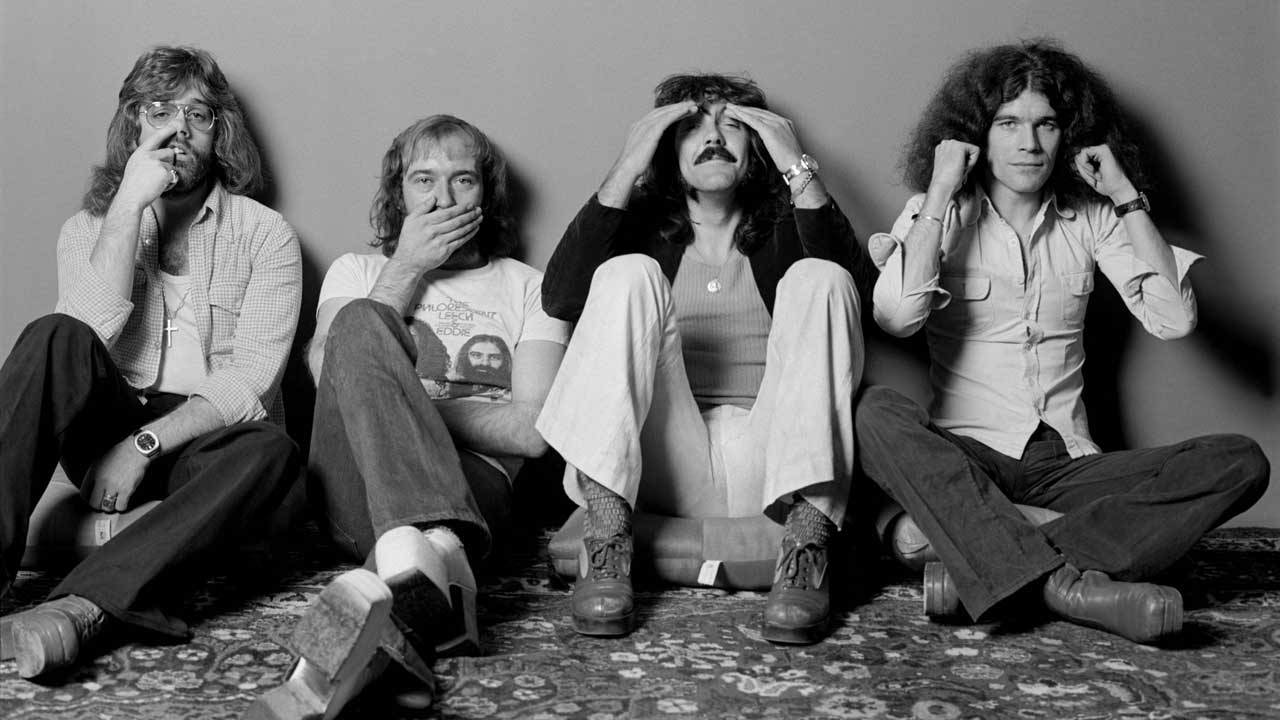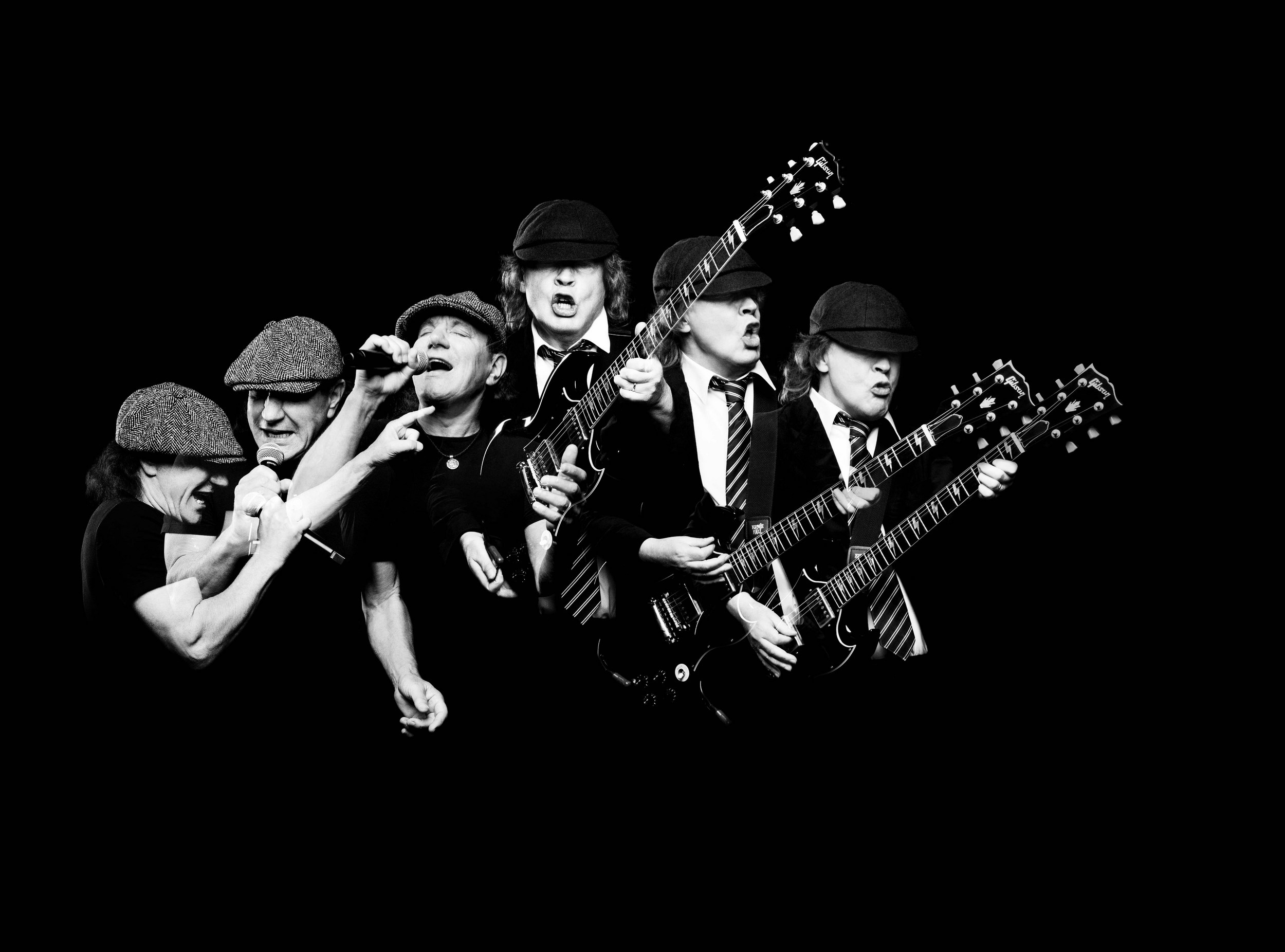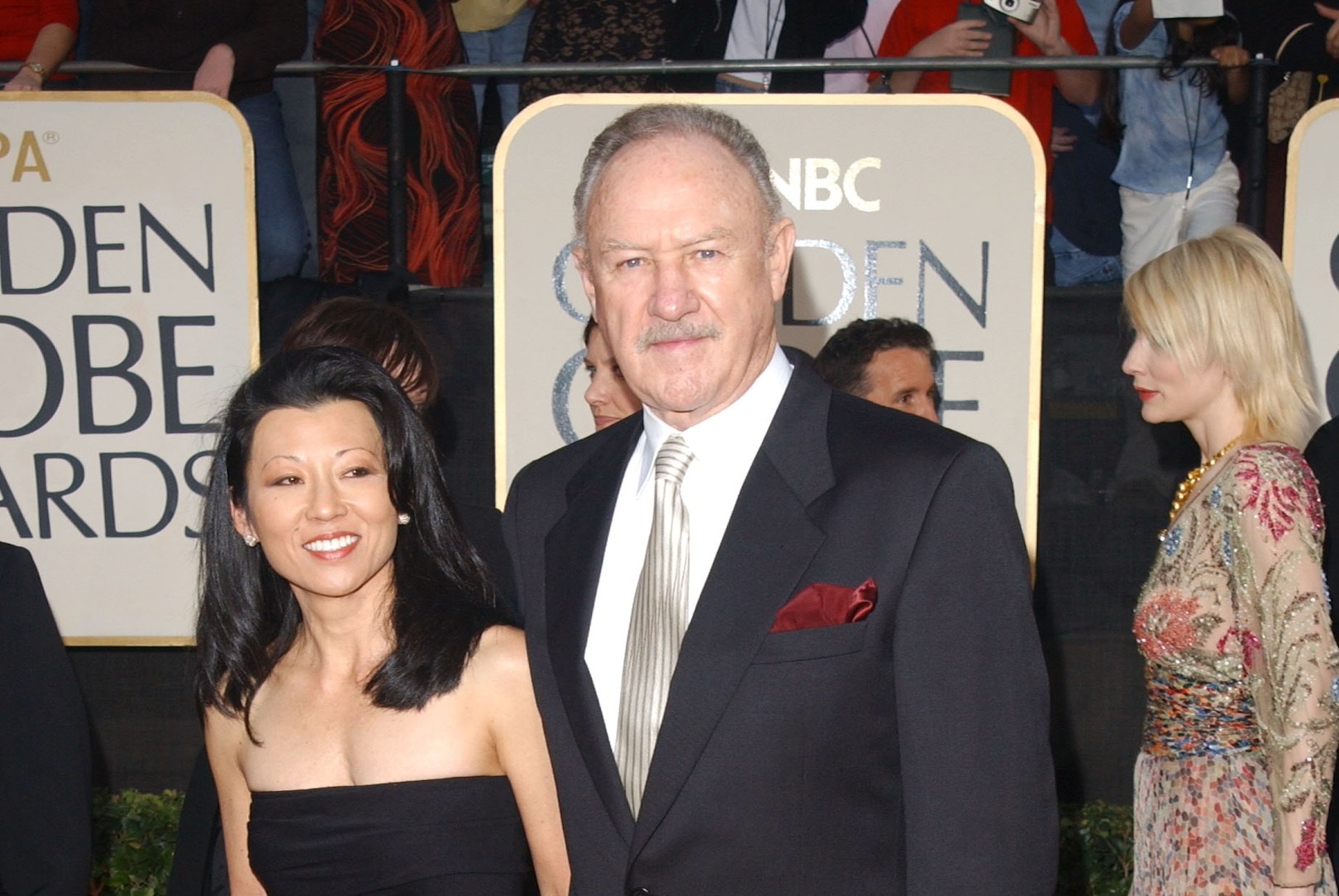
Feature Photo: Sterling Munksgard / Shutterstock.com
Tom Petty and the Heartbreakers emerged from Gainesville, Florida, in 1976, quickly establishing themselves as a formidable force in rock music. The original lineup featured Tom Petty on lead vocals and rhythm guitar, Mike Campbell as lead guitarist, Benmont Tench on keyboards, Stan Lynch handling drums, and Ron Blair on bass. Their self-titled debut album, released the same year, included tracks like “Breakdown” and “American Girl,” which, despite modest initial success in the U.S., garnered significant attention in the UK. This early exposure set the stage for their burgeoning career.
The band’s perseverance paid off with their third album, “Damn the Torpedoes” (1979), which achieved platinum status and featured hit singles such as “Don’t Do Me Like That” and “Refugee.” This success solidified their presence in the American rock scene. Subsequent albums like “Hard Promises” (1981) and “Long After Dark” (1982) continued their momentum, producing notable tracks including “The Waiting” and “You Got Lucky.” Throughout these years, the band underwent lineup changes, with Howie Epstein replacing Ron Blair on bass in 1982, bringing a renewed energy to their sound.
In 1985, the release of “Southern Accents” showcased the band’s versatility, blending rock with Southern influences. The album’s standout single, “Don’t Come Around Here No More,” co-written with Dave Stewart, became a defining track, complemented by a memorable music video. The band’s collaboration with Bob Dylan during his True Confessions Tour further expanded their musical horizons and audience reach. Their adaptability was evident as they seamlessly transitioned between studio recordings and live performances, maintaining a robust touring schedule.
Tom Petty also pursued solo projects, with “Full Moon Fever” (1989) being a standout success. The album featured iconic songs like “Free Fallin’,” “I Won’t Back Down,” and “Runnin’ Down a Dream.” Despite being a solo endeavor, members of the Heartbreakers contributed to the album, blurring the lines between Petty’s solo work and the band’s collective efforts. This period also saw the release of “Into the Great Wide Open” (1991), which included hits such as “Learning to Fly” and the title track, further cementing their legacy in rock music.
Over their four-decade-long career, Tom Petty and the Heartbreakers released 13 studio albums, with “Hypnotic Eye” (2014) being their final record. Their extensive catalog boasts numerous hit singles, including “Mary Jane’s Last Dance,” “Breakdown,” and “American Girl.” The band’s consistent ability to produce relatable and enduring music has endeared them to fans worldwide. Their sound, characterized by a blend of rock, heartland rock, and Southern rock, resonates with a broad audience, reflecting the experiences and emotions of everyday life.
The band’s contributions to music have been recognized with several prestigious awards. They were inducted into the Rock and Roll Hall of Fame in 2002, a testament to their influence and longevity in the industry. Additionally, they received a star on the Hollywood Walk of Fame in 1999, honoring their impact on the recording industry. Tom Petty’s songwriting prowess earned him multiple Grammy Awards, and in 2017, he was honored as the MusiCares Person of the Year, acknowledging both his artistic achievements and philanthropic efforts.
Beyond their musical accomplishments, Tom Petty and the Heartbreakers were known for their commitment to artistic integrity and social causes. Petty was vocal about artists’ rights and took stands against record companies on issues such as album pricing and contractual disputes. The band supported various charitable organizations, including the Midnight Mission, which aids the homeless in Los Angeles. Their dedication to both their craft and community has left an indelible mark, inspiring countless musicians and fans alike.
# 10 – Anything That’s Rock ‘N’ Roll
“Anything That’s Rock ‘n’ Roll” was recorded by Tom Petty and the Heartbreakers for their self-titled debut album, released on November 9, 1976. The song was produced by Denny Cordell and recorded at Shelter Studios in Hollywood, California. The lineup for this recording featured Tom Petty on lead vocals and guitar, Mike Campbell on lead guitar, Benmont Tench on keyboards, Ron Blair on bass, and Stan Lynch on drums.
Released as a single in the United Kingdom in April 1977, “Anything That’s Rock ‘n’ Roll” became the band’s first UK hit, peaking at No. 36 on the UK Singles Chart for the week ending July 2, 1977. Notably, the song was not released as a single in the United States. The B-side of the UK single featured a live version of “Fooled Again (I Don’t Like It),” taken from The Official Live Bootleg. A live rendition of “Anything That’s Rock ‘n’ Roll,” recorded on November 11, 1977, at Capitol Studios in Hollywood, was later included in the 2018 box set An American Treasure.
Critically, the song contributed to establishing Tom Petty and the Heartbreakers’ presence in the UK music scene before they achieved significant recognition in the United States. Their extensive touring, including a support slot in April 1977 on Nils Lofgren’s UK schedule, helped amplify their growing reputation. The success of “Anything That’s Rock ‘n’ Roll” in the UK charts marked a pivotal moment in the band’s early career, showcasing their appeal to a broader international audience.
# 9 – American Dream Plan B
“American Dream Plan B” was recorded by Tom Petty & The Heartbreakers for their thirteenth studio album, Hypnotic Eye, which was released on July 29, 2014. The album was produced by Petty and longtime collaborator Mike Campbell, with recording sessions taking place at Shoreline Recorders and The Clubhouse in Los Angeles. The band’s lineup on the track featured Petty on lead vocals and rhythm guitar, Campbell on lead guitar, Benmont Tench on keyboards, Ron Blair on bass, and Steve Ferrone on drums. The song exemplified the rawer, grittier sound Petty and the band aimed for on Hypnotic Eye, which marked a return to their harder-edged rock roots.
Lyrically, “American Dream Plan B” presents a determined but weary protagonist who clings to an unwavering belief in personal success despite the systemic obstacles in his path. Petty delivers lines like “I got a dream I’m gonna fight till I get it, I got a dream I’m gonna fight till I get it right” with a raspy conviction, encapsulating a rebellious spirit that aligns with some of his most anthemic work. The song acknowledges disillusionment (“My success is anybody’s guess”) while simultaneously rejecting defeat, embodying a working-class ethos similar to other blue-collar rock narratives. The defiant perspective in “American Dream Plan B” contrasts with the more philosophical resignation found in “I Won’t Back Down,” another Petty classic that asserts perseverance but with a calmer resolve. Here, the protagonist is scrappier, half-lit, stumbling through life but refusing to let setbacks extinguish his ambition.
Musically, the track is driven by a distorted, chugging guitar riff that establishes an aggressive tone from the outset. Campbell’s biting lead work complements Petty’s snarling delivery, while Ferrone’s tight drumming keeps the song moving with an unrelenting pulse. The track’s intensity aligns with the raw energy of Hypnotic Eye as a whole, making it one of the album’s most explosive moments.
# 8 – Change Of Heart
Recorded during sessions for Long After Dark, “Change of Heart” captured Tom Petty & The Heartbreakers at a transitional moment, blending their signature rock energy with a tighter, more polished sound. The song was laid down at Sunset Sound and Sound City Studios in Los Angeles in 1982, produced by Jimmy Iovine, who had worked extensively with the band since Damn the Torpedoes. The lineup featured Petty on lead vocals and rhythm guitar, Mike Campbell on lead guitar, Benmont Tench on keyboards, Ron Blair on bass, and Stan Lynch on drums. “Change of Heart” was released as the second single from the album, reinforcing the band’s status as one of the most consistent rock acts of the early 1980s.
The song’s lyrics reflect the abrupt shift in a relationship, with Petty lamenting how quickly affection turns cold: “You never needed me / You only wanted me around / It gets me down.” The protagonist grapples with the sudden realization that what once felt solid has slipped away, echoing themes of disillusionment that frequently surfaced in Petty’s songwriting. Unlike the defiant persistence in “American Dream Plan B,” where the narrator fights against obstacles, “Change of Heart” embraces the inevitability of loss. However, the driving tempo and aggressive instrumentation inject a sense of catharsis rather than defeat, making it one of the more electrifying breakup songs in the Heartbreakers’ catalog.
“Change of Heart” was one of the hardest-hitting tracks on Long After Dark, with Campbell’s piercing guitar riffs and Lynch’s relentless drumming propelling the song forward. Petty’s vocal delivery carried an urgency reminiscent of his early work, channeling frustration into an anthemic chorus. Critics responded favorably to the song’s raw energy, with Billboard praising it as one of the album’s highlights. Commercially, it reached No. 21 on the Billboard Hot 100, securing its place as a radio staple of the era. Within the scope of this list, “Change of Heart” stands as one of Petty’s most straight-ahead rockers, embracing a no-frills approach that emphasized the band’s ability to craft infectious, hard-driving songs.
# 7 – A Thing About You
“A Thing About You” was recorded for Hard Promises, the fourth studio album by Tom Petty & The Heartbreakers, which was released on May 5, 1981. The song was produced by Petty and Jimmy Iovine, with recording sessions taking place at Sound City Studios in Van Nuys, California. The lineup on the track featured Petty on lead vocals and rhythm guitar, Mike Campbell on lead guitar, Benmont Tench on keyboards, Ron Blair on bass, and Stan Lynch on drums. Though not released as a single, the track captured the band’s signature mix of power pop and rock, emphasizing their ability to blend melody with muscular instrumentation.
“A Thing About You” explores an irresistible romantic obsession, with the narrator confessing his helpless attraction despite the uncertainties of love. Lines such as “Don’t matter what you say / Don’t matter what you do / I gotta thing about you” reinforce the theme of being drawn to someone beyond reason or control. The song’s urgency aligns it with the more fervent rockers in Petty’s catalog, standing in contrast to the melancholic resignation of “Change of Heart.” Where that song lamented lost love, “A Thing About You” embraces its emotional turmoil, portraying desire as an unstoppable force.
The track delivered one of Hard Promises’s most direct and driving performances. Campbell’s bright, punchy guitar leads cut through the mix, while Lynch’s drumming maintained a steady, forceful rhythm that gave the song a live-wire energy. The interplay between Petty’s vocals and the band’s tight instrumentation recalled the high-energy rockers from Damn the Torpedoes, reinforcing their ability to craft infectious yet hard-hitting tracks. Critics recognized “A Thing About You” as an album highlight, praising its blend of pop sensibility with raw rock intensity. Within this list, it holds its place as one of the Heartbreakers’ most propulsive love songs, capturing the thrill and unpredictability of desire.
# 6 – Even The Losers
“Even the Losers” was recorded for Damn the Torpedoes, the third studio album by Tom Petty & The Heartbreakers, which was released on October 19, 1979. The song was produced by Jimmy Iovine and Petty, with recording sessions taking place at Sound City Studios in Van Nuys, California. The band’s lineup featured Petty on lead vocals and rhythm guitar, Mike Campbell on lead guitar, Benmont Tench on keyboards, Ron Blair on bass, and Stan Lynch on drums. Although it was never released as a single, the song became one of Petty’s most beloved deep cuts, capturing the raw, underdog spirit that defined much of his songwriting.
“Even the Losers” tells a story of fleeting romance and the painful realization that even the most passionate moments are often temporary. The opening lines, “Well, it was nearly summer, we sat on your roof / Yeah, we smoked cigarettes and we stared at the moon”, evoke a vivid memory of youthful love and invincibility, only to be followed by the sting of being forgotten. The chorus—“Even the losers get lucky sometimes”—is both a rallying cry and a resignation, embodying Petty’s gift for writing about heartbreak with a sense of resilience. This theme of perseverance aligns with the determined energy of “American Dream Plan B,” though while that song is a defiant refusal to give in, “Even the Losers” acknowledges the pain of loss while clinging to the small victories.
Critics and fans have often pointed to “Even the Losers” as one of Petty’s finest anthems of heartbreak, a perfect blend of vulnerability and rock & roll defiance. Within this list, it stands as one of the most emotionally charged rockers, capturing the bittersweet nature of love and loss with an unshakable sense of melody and power
# 5 – American Girl
When Tom Petty & The Heartbreakers recorded “American Girl,” they unknowingly created a song that would come to define their sound and legacy. Tracked at Shelter Studios in Hollywood, California, and produced by Denny Cordell, the song became the closing track of their self-titled debut album, released on November 9, 1976. The lineup featured Petty on lead vocals and rhythm guitar, Mike Campbell on lead guitar, Benmont Tench on keyboards, Ron Blair on bass, and Stan Lynch on drums. Though it failed to chart upon release, “American Girl” gradually built a reputation as one of the band’s signature songs, later becoming a staple of classic rock radio and a highlight of their live performances.
The lyrics paint a portrait of a restless young woman yearning for something beyond her immediate world, a dreamer caught between the promise of something greater and the painful reality of her present. Petty’s opening line, “Well, she was an American girl, raised on promises,” immediately captures both the idealism and disillusionment that define the character. The song’s second verse intensifies the mood, as she stands alone on a balcony, listening to the sound of passing cars on Highway 441—an evocative image of isolation and longing. Unlike “Even the Losers,” which reminisces on love lost, “American Girl” focuses on the hope that the next opportunity might finally be the one that lasts.
From the moment Campbell’s ringing guitar riff kicks in, “American Girl” moves with an unstoppable energy, blending garage rock grit with Byrds-inspired jangle. Lynch’s driving drumbeat and Blair’s tight bassline provide the momentum, while Petty delivers one of his most impassioned vocal performances. The song’s high-tempo attack places it alongside the band’s hardest-hitting rockers, much like “Change of Heart,” which also leans into a fast-paced, full-band assault.
# 4 – Don’t Do Me Like That
Tom Petty & The Heartbreakers secured their first Top 10 hit with “Don’t Do Me Like That,” a song that showcased the band’s ability to merge infectious hooks with a sharp lyrical bite. Recorded during the sessions for Damn the Torpedoes, the track was produced by Jimmy Iovine and cut at Sound City Studios in Van Nuys, California. Petty initially wrote the song years earlier and considered giving it to The J. Geils Band, but producer Iovine convinced him to keep it for himself. The lineup on the track featured Petty on lead vocals and rhythm guitar, Mike Campbell on lead guitar, Benmont Tench on keyboards, Ron Blair on bass, and Stan Lynch on drums. Released as the album’s lead single in November 1979, the song climbed to No. 10 on the Billboard Hot 100, cementing the band’s mainstream breakthrough.
“Don’t Do Me Like That” is a warning wrapped in an irresistible groove, with the narrator pleading against the possibility of betrayal. The opening verse introduces a friend’s cautionary tale of heartbreak, setting the stage for the song’s central theme—fear of being discarded and deceived. The repetition of “Don’t do me like that” reinforces the desperation, while lines like “Listen honey, can’t you see? Baby, it would bury me” emphasize the personal stakes. Unlike “Even the Losers,” which reflects on past heartbreak with a sense of wistful nostalgia, “Don’t Do Me Like That” operates in real time, with the narrator fighting to prevent an inevitable loss.
The song’s driving piano riff and crisp guitar work give it a buoyant, radio-friendly sheen, distinguishing it from the harder-edged rockers on Damn the Torpedoes. Lynch’s tight drumming and Tench’s rolling organ fills inject a rhythm-and-blues sensibility, while Petty’s sharp, slightly frantic vocal delivery keeps the tension high. The song’s polished but urgent energy placed it in direct contrast with the anthemic surge of “American Girl,” showing the band’s versatility in crafting radio-ready rock without sacrificing their signature grit. Critics praised the track for its immediacy and catchy structure, and its success helped propel Damn the Torpedoes to No. 2 on the Billboard 200. As one of the most commercially significant songs in Petty’s catalog, “Don’t Do Me Like That” remains a defining moment in the band’s ascent to rock stardom.
# 3 – I Need To Know
With its urgent rhythm and aggressive vocal delivery, “I Need to Know” brought a fiery intensity to You’re Gonna Get It!, the second studio album by Tom Petty & The Heartbreakers, released on May 2, 1978. The song was recorded at Shelter Studios in Hollywood, California, and produced by Petty alongside Denny Cordell. The lineup included Petty on lead vocals and rhythm guitar, Mike Campbell on lead guitar, Benmont Tench on keyboards, Ron Blair on bass, and Stan Lynch on drums. Released as the album’s lead single, “I Need to Know” reached No. 41 on the Billboard Hot 100, reinforcing the band’s growing reputation for delivering fast-paced, high-energy rock.
The repeated plea—“I need to know / If you think you’re gonna leave then you better say so”—creates an atmosphere of emotional tension, as if the uncertainty itself is unbearable. Unlike the resigned heartbreak of “Even the Losers,” which looks back on love lost with bittersweet reflection, “I Need to Know” is a direct confrontation, filled with frustration and urgency. The song’s relentless pace matches the desperation in the lyrics, making it one of Petty’s most immediate and high-energy recordings.
Lynch’s pounding drums and Campbell’s sharp, staccato guitar work, give it a tight, punchy sound. Tench’s swirling organ lines add a layer of frenetic energy, while Petty’s forceful vocal performance brings an almost punk-like intensity to the song. “I Need to Know” shares its propulsive energy with “American Girl,” but where that track channels restless optimism, this one brims with raw frustration. Critics praised the song’s no-frills, hard-hitting approach, with many recognizing it as an essential example of Petty’s ability to craft fast, infectious rock songs. Decades later, “I Need to Know” remains a defining track in the Heartbreakers’ catalog, embodying the urgency and passion that made them one of the most formidable rock bands of their era.
# 2 – Refugee
Tom Petty & The Heartbreakers carved out one of their most enduring rock anthems with “Refugee,” a song that embodied the defiant spirit of Damn the Torpedoes. Recorded at Sound City Studios in Van Nuys, California, and produced by Jimmy Iovine along with Petty, the track was built on a foundation of raw intensity and meticulous studio craftsmanship. The band’s lineup featured Petty on lead vocals and rhythm guitar, Mike Campbell on lead guitar, Benmont Tench on keyboards, Ron Blair on bass, and Stan Lynch on drums. Released as the album’s second single in January 1980, “Refugee” climbed to No. 15 on the Billboard Hot 100, cementing its status as one of the band’s most recognizable songs.
Lyrically, the song speaks to resilience in the face of betrayal and hardship. Petty’s chorus—“You don’t have to live like a refugee”—delivers a forceful message against victimhood, urging the listener to reclaim their sense of self despite past struggles. The verses reinforce this theme, hinting at a relationship damaged by past wounds, with lines like “Somewhere, somehow, somebody must have kicked you around some.” Unlike the emotional vulnerability of “Even the Losers,” which reflects on love lost with nostalgic sorrow, “Refugee” pushes back against suffering, demanding strength instead of submission. The song’s confrontational tone aligns it with “I Need to Know,” but where that song channels urgency, “Refugee” carries a deeper frustration, as if shaking someone awake from their self-imposed exile.
# 1 – Jammin’ Me
Tom Petty & The Heartbreakers’ Jammin’ Me,” closes this list with a song that bottled up the chaos of the late 1980s and threw it back in the face of an overwhelming media landscape. Recorded at Sound City Studios in Van Nuys, California, and produced by Petty, Mike Campbell, and Jeff Lynne, the track was released on April 20, 1987, as the lead single from Let Me Up (I’ve Had Enough). Petty co-wrote the song with Campbell and Bob Dylan, shaping its rapid-fire lyrical attack into a statement of frustration and exhaustion. Featuring Petty on lead vocals and rhythm guitar, Campbell on lead guitar, Benmont Tench on keyboards, Howie Epstein on bass, and Stan Lynch on drums, “Jammin’ Me” reached No. 18 on the Billboard Hot 100, proving that the band could still pack a punch more than a decade into their career.
Lyrically, the song captures the feeling of being bombarded by an endless stream of headlines, celebrity scandals, and cultural noise. The opening lines—“You got me in a corner, you got me against the wall / I got nowhere to go, I got nowhere to fall”—set the stage for a relentless list of grievances, with Petty demanding to “Take back Vanessa Redgrave, take back Joe Piscopo, take back Eddie Murphy, give ’em all someplace to go.” The song’s furious delivery and rejection of societal overload separate it from tracks like “Even the Losers,” which reflected on personal heartbreak, or “Refugee,” which championed resilience. Here, Petty isn’t looking for resolution—he’s pushing back against the sheer volume of distraction and disinformation.
Musically, “Jammin’ Me” hits hard, driven by Campbell’s jagged guitar riffs and Lynch’s forceful drumming. The song’s stripped-down energy aligns it more with the raw urgency of “I Need to Know” than the polished sheen of later hits, reinforcing the band’s garage rock roots. As the closing song on this list, “Jammin’ Me” is a fitting final statement—restless, uncompromising, and unafraid to call out the absurdity of modern life. Just as the band never backed down from a fight, this song ends the collection with the same fiery energy that made Tom Petty & The Heartbreakers one of the most enduring rock bands of their era.
Check out similar articles on ClassicRockHistory.com Just click on any of the links below……
Read More: Classic Rock Bands List And Directory
10 Most Rocking Tom Petty & The Heartbreakers Songs article published on Classic RockHistory.com© 2025







